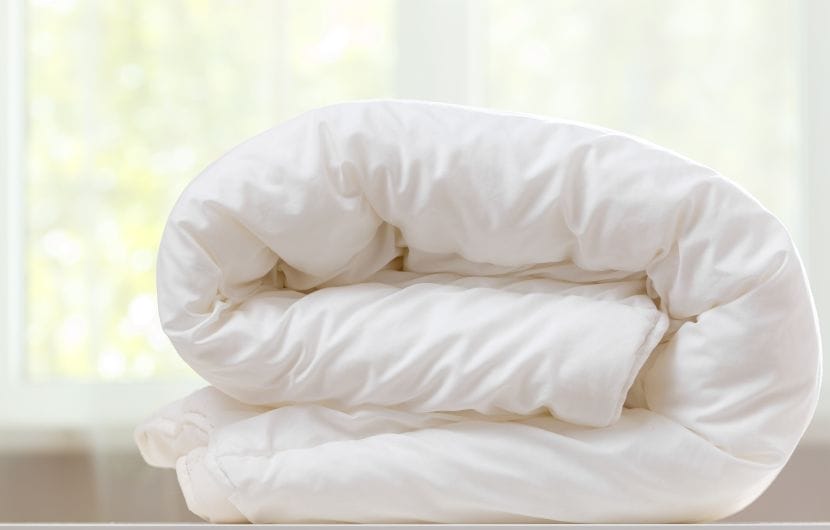Blog
How to Clean a Down Duvet?
Down duvets offer warmth, softness, and lasting comfort, but they need proper care to stay in top shape. From regular fluffing to careful cleaning, simple maintenance habits can help preserve their loft, cleanliness, and longevity. With the right approach, a down duvet remains a reliable and cozy part of any sleep setup through every season.
What is a Down Duvet?
A down duvet is a soft, fluffy blanket filled with duck or goose down. It goes inside a duvet cover to keep it clean and let you change up the look. It’s lightweight, super warm, and great for year-round comfort without feeling heavy.
Can a down Duvet Be Washed?
Yes, a down duvet can be washed, whether it’s a duck or goose down dovet, because the down filling and fabric are made to handle gentle cleaning. But it needs to be done carefully. With the right care, it stays fluffy and fresh without damage. Just be sure to follow the right steps.
Why Clean a Down Duvet?
A clean down duvet doesn’t just look good; it also feels good. Even if a duvet doesn’t look dirty, cleaning it once 1-3 years (or as needed) can prevent build-up and keep the sleep environment healthy. Regular cleaning helps to:
- Maintain hygiene: It removes dust, allergens, and oils that accumulate over time.
- Restore loft: Washing rejuvenates the down, keeping it fluffy and warm.
- Avoid odors: Fresh bedding prevents musty or stale smells.
- Extend lifespan: Proper cleaning helps preserve the duvet for many years.

Step-by-Step Guide
Preparing the Down Duvet for Cleaning
Before starting washing, take a few moments to inspect your duvet. Remove the duvet cover and shake it out to release any loose dirt or dust. If there are any visible stains, spot clean them with a mild detergent or stain remover. Also, check the care label to ensure there are no special instructions, such as dry cleaning.
Normally, down duvets cannot be dry cleaned because dry cleaning agents will destroy the natural oils in the down, reducing its warmth retention and fluffiness.
Washing the Down Duvet
When washing a down duvet, a front-loading washing machine is recommended, as top-loading machines can be harsh on delicate materials. The washer should be set to a gentle or delicate cycle with cold water. A mild, enzyme-free detergent helps preserve the natural oils in the down, while fabric softeners should be avoided since they can reduce loft and softness. The duvet must have enough space in the drum to move freely for effective cleaning.
If the duvet is too large for a standard home washer, it’s best to use a larger machine at a laundromat. A low-spin cycle is ideal to prevent damage to the filling.
Drying the Down Duvet
Drying a duvet properly is essential to prevent mildew and restore its loft. Place the duvet in the dryer on a low heat setting. It may take 1-2 hours or more for the duvet to dry completely, so it’s important to check it every 30 minutes. You can add a couple of clean tennis balls or dryer balls to help fluff the down and prevent it from clumping.
If a dryer is not accessible, air-drying is an option, but it will take longer. Lay the duvet flat on a clean surface, ideally in a sunny area. Make sure to fluff it regularly to avoid clumping.
How Often Should a Down Duvet be cleaned?
A down duvet should be cleaned once a year or as needed. However, if it has been exposed to spills, stains, or heavy use, you might want to clean it more frequently. Using a duvet cover can also help protect it and reduce the need for frequent washing.

Common Problems
Fear of Ruining the Loft and Warmth
Many users are concerned that washing a down duvet will cause the fill to clump or lose its fluffiness. This is a valid concern, but with the right technique, the loft can be preserved. The key is using low temperatures and a gentle cycle during washing, followed by a careful drying process with dryer balls or tennis balls to keep the down fluffy.
Stubborn Stains and Odors
Down duvets can accumulate stains from sweat, body oils, or accidental spills. These stains, along with odors, can be tricky to remove. The best solution is to pre-treat stains with a mild stain remover or a mixture of water and detergent before washing. For odors, make sure to wash the duvet at a temperature that helps eliminate bacteria and refreshes the duvet.
Difficult Drying Process
One of the most common problems is drying a down duvet completely. It can take hours for the duvet to dry properly, and if not done right, it can develop a damp smell or mildew. The best approach is to dry it on a low heat setting in the dryer, checking it every 30 minutes to ensure it’s drying evenly. Using tennis balls or dryer balls will help maintain the duvet’s fluff and prevent it from clumping.
Fabric Shrinkage and Damage
Some users worry about fabric shrinkage or damage, especially if the duvet is made of delicate materials. To avoid this, always follow the duvet’s care label. Use cold or lukewarm water and a gentle cycle to minimize the risk of shrinkage or fabric tears.
Care and Storage Tips for Down Duvet
- Use a duvet cover to protect duvet from stains, dust and oils.
-
Ensure it’s clean and fully dry before storing to prevent mold or odors.
-
Use breathable storage like a cotton bag or fabric bin—plastic can trap moisture.
-
Keep it in a cool, dry place, away from sunlight and humidity.
-
Fluff the duvet occasionally to maintain loft and prevent clumping. It’s also helpful to air the duvet out in a well-ventilated space to reduce moisture build-up and keep it feeling fresh.
Related reading: Down Comforter Buying & Care Guide

FAQs
1. Down Duvet & Down Comforter
A down duvet and a down comforter are super similar—they’re both fluffy, warm blankets filled with down feathers. The main difference? A duvet usually goes inside a removable cover (like a pillow in a pillowcase), while a comforter has its outer fabric built-in and is often used as-is. So, duvets are easier to clean, but comforters are simpler to use.
2. Can I Wash My Down Duvet in a Regular Washing Machine?
Yes, most down duvets can be washed in a regular washing machine, as long as it’s large enough to accommodate the duvet without overcrowding. A front-loading machine is ideal because it’s gentler on the duvet. Always check the duvet’s care label for any specific instructions regarding machine washing.
3. What If My Down Duvet Is Labeled “Dry Clean Only”?
Most down duvets are not labeled “dry clean only.” In fact, many are made to be machine washable, as long as to follow the care instructions—like using a gentle cycle and mild detergent. However, some high-end or older duvets might say “dry clean only” to protect the fabric or stitching. Always check the label first, but machine washing is common and safe for most modern down duvets.
4. Can I Use Fabric Softener on a Down Duvet?
No, fabric softeners should be avoided when washing a down duvet. They can coat the down and reduce its natural loft and breathability. Stick to mild, enzyme-free detergents to keep the down in its best condition.
In Summary
Keeping a down duvet clean and fluffy is easy with the right care. Wash gently, dry thoroughly, and use a duvet cover to protect it. Regular fluffing and airing help it stay fresh between washes. Follow these tips, and the duvet will stay cosy, clean, and long-lasting for years.
Recommended reading: What Is Hotel Linen?
Conclusion
Down duvets offer warmth, softness, and lasting comfort, but they need proper care to stay in top shape. From regular
Leave a Comment

 Nov 27, 2025
Nov 27, 2025 
